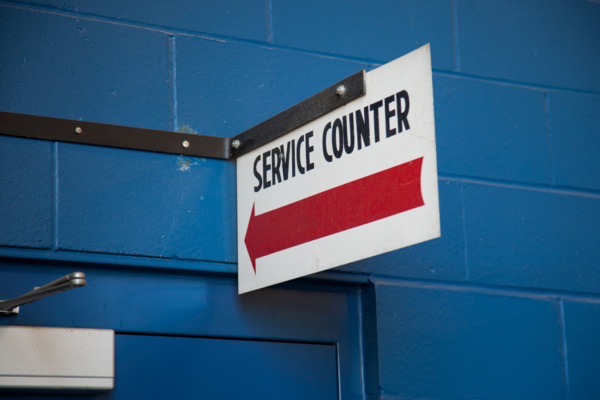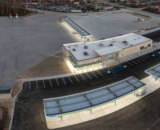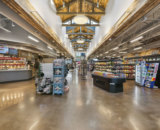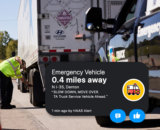Travel center employers have a responsibility to provide a safe workplace, and the right clothing, equipment and training can help keep employees safe, whether they are working inside or outside of the building. The right tools are especially important in some situations, such as a roadside repair, that bring more risk to workers.
Keeping Roadside Service Technicians Safe
For roadside service technicians, the most important thing is for them to be seen. “We lose a technician to a roadside fatality once every 13-14 days,” said Jody Smith, regional manager, AAA. “People are distracted. You’re hoping someone sees you, and you want to do everything you can.”
Mary Eriksen, risk manager for Sapp. Bros., said technicians try to do everything they can to get the truck off of the road, but sometimes it isn’t possible. “At that point, you have to make yourself as visible as possible and you have to try to get drivers’ attention,” she said.
During a recent episode of The Truck Stops Here podcast, Jake Elovirta, director of compliance and enforcement programs for the Commercial Vehicle Safety Alliance, recommended operators create policies around the clothing employees wear at roadside.
High-visibility vests are essential and something passenger vehicle drivers will notice. “We’ve trained people to watch for that vest, so that is what they expect to see,” Eriksen said.
Wearing reflective gear is not only a best practice, but it may also be a law. “A lot of states have laws around how much of your body has to be covered with reflective material at roadside,” Smith explained. “You might see people on the roadside with one stripe or two stripes on their pants.”
Smith said that roadside technicians often wear reflective vests or pants, but they may put on large coats in the winter, making the safety gear useless. “I always remind people, if you are wearing outer layers, put a vest over it to maintain that level of visibility,” he said.
Smith said the American National Standards Institute has specific requirements for high-visibility clothing, and he noted that the local department of transportation and highway patrol are excellent resources to help operators determine the best safety clothing for roadside technicians. “Always err on the side of the most reflective material,” he said.
Beyond clothing, Sapp Bros.’ technicians place a signage about 500 yards out to try to get people’s attention. “We also have traffic cones, and we park behind the truck with the lights on our service truck going. We try to do everything we can to get people’s attention,” Eriksen said.
Lighting at the scene is essential, Elovirta said. However, it is important that the lighting isn’t too distracting. “We’ve seen in the law enforcement community crashes and deaths because of the dazzling of the lights,” he said. “We’re seeing more illumination of the location,” he said.
Some vehicles even have a spotlight that can illuminate a technician exiting a vehicle so passersby see him or her right away, Elovirta said.
Smith added that safety begins even before a technician gets to a breakdown. “They need to be mentally prepared and have gloves, safety glasses, a vest and a backup vest,” he said. “Then when they get there, they need to set up the scene for success with cones and flares.”
There should also be a dedicated area away from the scene where the driver can wait if he or she can’t remain in the cab.
“Another key component and mantra is roadside, wrong side,” Smith said. “Don’t expose yourself to the traffic side of the vehicle. If the flat tire is on the traffic side, drive the vehicle off to the road a little more. Do everything you can to avoid being on the side of the road at all costs.”
Improving Safety Inside
The right apparel can also improve the safety of workers in the shop, store and restaurant. Eriksen said technicians in the service center have to have oil- and slip-resistant composite- or steel-toed boots. The company reimburses employees for part of the cost. “Boots are expensive, so if you don’t reimburse it, somebody will go too long before replacing them,” she said.
Sapp Bros. also reimburses c-store workers for their shoes, which have to be closed toe and hell and slip resistant. “We don’t want to have people ripping toe nails off or the shoe falling off when they’re walking,” Eriksen said. “Slips and falls are a big risk, so we’re making sure they’re wearing something safe.”
Cooks and waitresses have get aprons, which provide protection against a possible burn if something spills, and also keeps their clothes cleaner. Shoes in the kitchen and restaurant are also important.
Keeping Workers Warm
It can get cold in the Midwest, and Eriksen said Sapp Bros. provides coats, insulated gloves, stocking caps and other warm weather gear for its facilities maintenance team. “We know that when they’re working outside, they don’t get frostbite,” she said. “Anybody who has a location where it snows is going to have to worry about that.”
In the summer, the maintenance team has lighter clothing to ensure they’re not overheating. “We let them wear short sleeves and sometimes even just a t-shirt,” Eriksen said.
No matter the weather, the maintenance staff wears high-visibility vests when outside. “It can be as dangerous on the fuel islands as it can be out on the street,” Eriksen said.
// Created for Stop Watch magazine, the magazine of the NATSO Foundation. The NATSO Foundation is the research, education and public outreach subsidiary of NATSO, Inc. The NATSO Foundation provides programs and products aimed at strengthening travel plazas’ ability to meet the needs of the traveling public through improved operational performance and business planning. Visit www.natsofoundation.org for more information. (Donate to the NATSO Foundation here.)
Subscribe to Updates
NATSO provides a breadth of information created to strengthen travel plazas’ ability to meet the needs of the travelling public in an age of disruption. This includes knowledge filled blog posts, articles and publications. If you would like to receive a digest of blog post and articles directly in your inbox, please provide your name, email and the frequency of the updates you want to receive the email digest.



